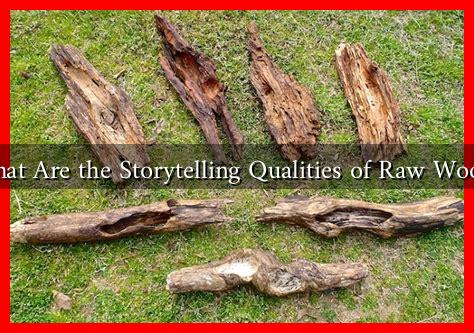-
Table of Contents
What Are the Storytelling Qualities of Raw Wood?
Raw wood, in its unrefined state, possesses a unique narrative that transcends its physical form. Each piece of wood tells a story, shaped by its environment, growth conditions, and the passage of time. This article explores the storytelling qualities of raw wood, examining how its texture, grain, and history contribute to its narrative potential.
The Natural Aesthetics of Raw Wood
The visual appeal of raw wood is one of its most compelling storytelling qualities. The natural patterns and textures found in wood can evoke emotions and memories, making it a powerful medium for storytelling. Here are some key aspects:
- Grain Patterns: The unique grain of each piece of wood can tell a story about its growth. For instance, tight grain patterns may indicate a slow growth period, while wider grains suggest rapid growth. This can reflect the environmental conditions the tree experienced.
- Color Variations: The color of wood can vary significantly based on species and age. Darker woods may evoke feelings of warmth and comfort, while lighter woods can feel fresh and airy. These color variations can influence the mood of a space or object.
- Texture: The tactile quality of raw wood invites touch and interaction. The roughness or smoothness of a surface can enhance the storytelling experience, making it more immersive.
The Historical Context of Raw Wood
Every piece of raw wood carries with it a history that can be traced back to its origins. Understanding this context adds depth to its narrative:
- Source of the Wood: The geographical location where the wood was sourced can influence its story. For example, reclaimed wood from an old barn may carry the history of the farm it once belonged to, while exotic woods may tell tales of distant lands.
- Age of the Wood: The age of the wood can also contribute to its narrative. Ancient trees, like the Bristlecone Pine, can be thousands of years old, offering a glimpse into the past and the resilience of nature.
- Human Interaction: The way wood has been used by humans—whether in furniture, art, or architecture—adds another layer to its story. Each scratch, dent, or mark can signify a moment in time, a memory, or an experience.
Symbolism and Cultural Significance
Wood has been a significant material in various cultures throughout history, often symbolizing strength, growth, and life. Here are some examples of how raw wood is perceived across different cultures:
- Native American Culture: In many Native American traditions, trees are seen as sacred beings that connect the earth and sky. The wood from specific trees is often used in rituals and storytelling.
- Japanese Aesthetics: In Japan, the concept of “wabi-sabi” embraces the beauty of imperfection and transience, often reflected in the use of raw wood in traditional architecture and crafts.
- Modern Design: In contemporary design, raw wood is celebrated for its authenticity and connection to nature, often used in minimalist and sustainable design practices.
Case Studies: Raw Wood in Art and Design
Several artists and designers have harnessed the storytelling qualities of raw wood to create compelling works:
- Furniture Design: Designers like Thomas Moser use raw wood to create furniture that highlights the natural beauty and imperfections of the material, inviting users to appreciate its story.
- Art Installations: Artists such as Andy Goldsworthy use raw wood in their installations to create temporary works that reflect the natural environment, emphasizing the transient nature of life.
- Architecture: The use of raw wood in modern architecture, such as the Treetop Walkway in Germany, showcases the material’s ability to blend with nature while telling a story of sustainability and innovation.
Conclusion
The storytelling qualities of raw wood are multifaceted, encompassing its natural aesthetics, historical context, cultural significance, and applications in art and design. Each piece of wood carries a narrative shaped by its environment and human interaction, inviting us to explore and connect with its story. As we continue to appreciate and utilize raw wood in various forms, we not only celebrate its beauty but also honor the rich tapestry of stories it holds. For more insights into the world of wood and its applications, visit Wood Magazine.




